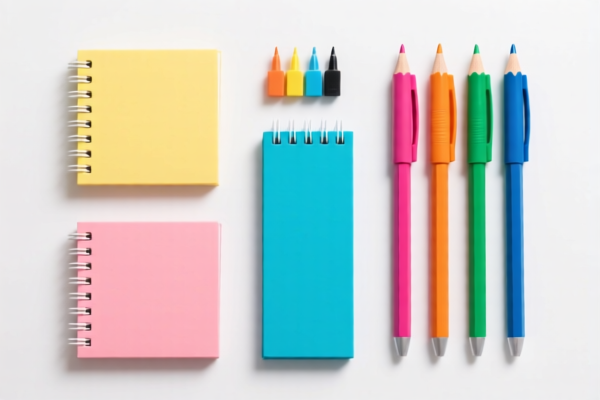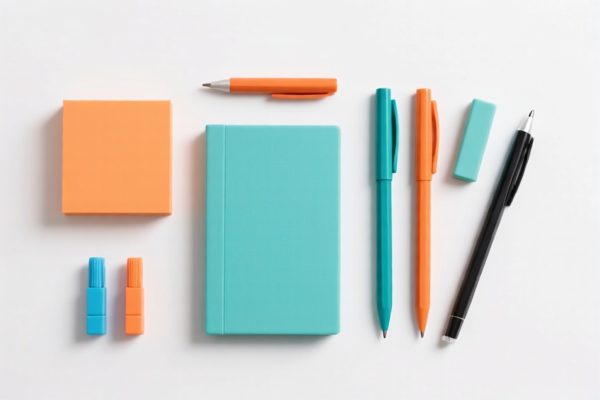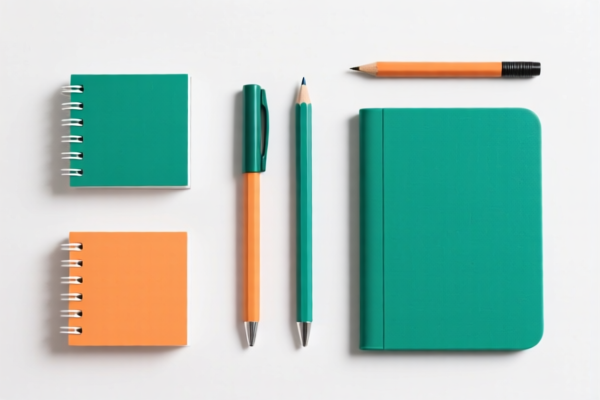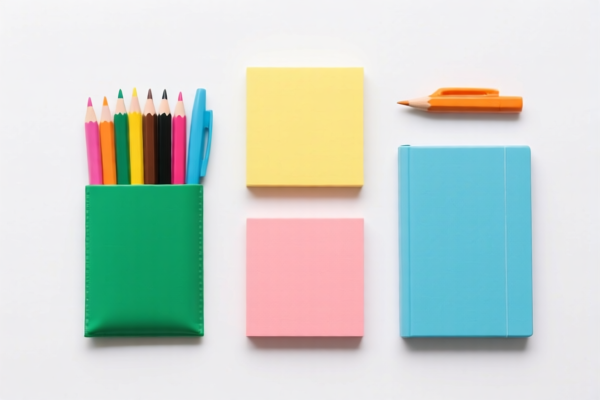| HS Code | Official Doc | Tariff Rate | Origin | Destination | Effective Date |
|---|---|---|---|---|---|
| 3926100000 | Doc | 35.3% | CN | US | 2025-05-12 |
| 4202295000 | Doc | 62.8% | CN | US | 2025-05-12 |
| 4202995000 | Doc | 62.8% | CN | US | 2025-05-12 |
| 9608500000 | Doc | The rate applicable to each article in the absence of this subhe+30.0% | CN | US | 2025-05-12 |
| 8305906000 | Doc | 43.2% | CN | US | 2025-05-12 |




Stationary
Stationery refers to commercially manufactured writing materials, including items used for writing, drawing, or organizing. The word "stationery" historically refers to materials sold by stationers, merchants who sold paper, inks, and other writing supplies.
Materials
Stationery encompasses a wide range of materials, including:
- Paper: Various types of paper are fundamental, including writing paper, drawing paper, card stock, and specialty papers like tracing paper or watercolor paper. Paper weight (thickness) is a key characteristic, measured in pounds (lbs) or grams per square meter (gsm).
- Ink: Traditionally made from dyes or pigments, modern inks include ballpoint, gel, fountain pen ink, and calligraphy ink.
- Wood: Used for pencils, pen bodies, and desk organizers.
- Plastic: Commonly used for pens, rulers, binders, and storage containers.
- Metal: Found in paper clips, binder clips, staplers, and pen components.
- Fabric: Used in notebooks, pencil cases, and decorative elements.
- Rubber/Polymer: Used in erasers and pencil grips.
Purpose
The primary purpose of stationery is to facilitate written communication and creative expression. This includes:
- Writing: Letters, notes, reports, essays, and other forms of text-based communication.
- Drawing & Sketching: Artistic creation, technical drawings, and visual note-taking.
- Organization: Keeping track of schedules, tasks, and important information.
- Creative Projects: Scrapbooking, card making, and other crafts.
Function
Stationery items perform diverse functions:
- Writing Instruments: Pens, pencils, markers, and highlighters allow for the creation of text and images.
- Paper Products: Notebooks, notepads, and loose-leaf paper provide surfaces for writing and drawing.
- Binding & Fastening: Staplers, paper clips, and binders secure paper together.
- Erasing: Erasers remove unwanted marks from paper.
- Measuring & Drawing: Rulers, protractors, and compasses aid in precise measurements and geometric constructions.
- Storage & Organization: Pencil cases, desk organizers, and file folders keep stationery items tidy and accessible.
Usage Scenarios
Stationery is used in a variety of settings:
- Education: Schools and universities utilize stationery for note-taking, assignments, and exams.
- Office: Businesses rely on stationery for internal communication, documentation, and administrative tasks.
- Personal Use: Individuals use stationery for personal correspondence, journaling, and creative hobbies.
- Art & Design: Artists and designers employ stationery for sketching, drafting, and creating artwork.
Common Types
- Pens: Ballpoint pens, gel pens, fountain pens, rollerball pens, felt-tip pens, and calligraphy pens.
- Pencils: Graphite pencils, colored pencils, mechanical pencils.
- Notebooks: Spiral notebooks, composition notebooks, hardbound notebooks, softcover notebooks.
- Paper: Loose-leaf paper, graph paper, lined paper, card stock, watercolor paper.
- Desk Accessories: Staplers, tape dispensers, paper clips, pencil holders, file folders.
- Art Supplies: Sketchbooks, drawing pencils, erasers, colored markers.
- Envelopes: Various sizes and styles for mailing letters and documents.
- Highlighters: For emphasizing text.
- Sticky Notes: For temporary reminders.
The term "stationary" broadly encompasses a range of paper-based products used for writing, recording, and office administration. Based on the provided reference material, several HS codes may be relevant depending on the specific type of stationary.
Here are the relevant HS codes:
- 4820102010: Registers, account books, notebooks, order books, receipt books, letter pads, memorandum pads, diaries and similar articles; Diaries, notebooks and address books, bound. This code specifically covers bound diaries, notebooks, and address books.
- 48: Chapter 48 – Paper or paperboard; articles of paper pulp, paper or paperboard.
- 20: Heading 20 – Registers, account books, notebooks, order books, receipt books, letter pads, memorandum pads, diaries and similar articles.
- 10: Subheading 10 – Diaries, notebooks and address books, bound.
- 4820102020: Registers, account books, notebooks, order books, receipt books, letter pads, memorandum pads, diaries and similar articles; Memorandum pads, letter pads and similar articles. This code covers memorandum pads and letter pads.
- 48: Chapter 48 – Paper or paperboard; articles of paper pulp, paper or paperboard.
- 20: Heading 20 – Registers, account books, notebooks, order books, receipt books, letter pads, memorandum pads, diaries and similar articles.
- 20: Subheading 20 – Memorandum pads, letter pads and similar articles.
- 4817100000: Envelopes, letter cards, plain postcards and correspondence cards, of paper or paperboard. This code specifically covers envelopes.
- 48: Chapter 48 – Paper or paperboard; articles of paper pulp, paper or paperboard.
- 17: Heading 17 – Envelopes, letter cards, plain postcards and correspondence cards, of paper or paperboard.
- 4911100080: Other printed matter, including printed pictures and photographs: Trade advertising material, commercial catalogs and the like. This code may apply to printed stationary items like letterheads or commercial forms.
- 49: Chapter 49 – Printed books, maps, drawings and photographic reproductions and plans and scores and parts for musical instruments.
- 11: Heading 11 – Other printed matter, including printed pictures and photographs.
- 10: Subheading 10 – Trade advertising material, commercial catalogs and the like.
- 9609908000: Pencils (other than those pencils of heading 9608), crayons, pencil leads, pastels, drawing charcoals, writing or drawing chalks and tailors' chalks: Other: Other. This code applies to pencils, crayons, and related writing/drawing tools.
- 96: Chapter 96 – Miscellaneous manufactured articles.
- 09: Heading 09 – Pencils (other than those pencils of heading 9608), crayons, pencil leads, pastels, drawing charcoals, writing or drawing chalks and tailors' chalks.
- 90: Subheading 90 – Other: Other.
Regarding HS code 4820102010 and 4820102020, please note that these codes cover registers, account books, notebooks, and similar articles.
According to the provided reference material, the HS code options related to 'stationary' are limited, with only the above 6 found.
Customer Reviews
No reviews yet.